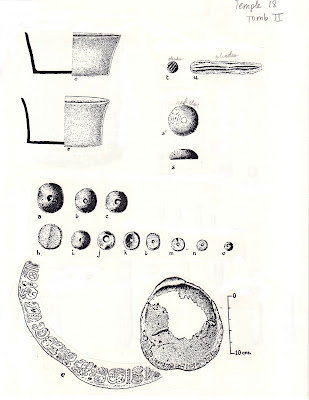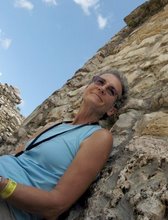 There was a time in world history when people did not know that the act of taking artifacts from an ancient city would create serious obstacles for scholars who try to reconstruct that city's history and so people thoughtlessly grabbed them up and took them home with them. However in today's world when people are supposed to know better, the behavior still goes on. Many ancient objects from Mesoamerican are scattered in private collections and museums throughout the world, thus these objects are out of context and we don't know much about them. I tell you this as an introduction to the above article that I found on Google Books – an article that comes from a magazine called "Historical Magazine", published in 1859.
There was a time in world history when people did not know that the act of taking artifacts from an ancient city would create serious obstacles for scholars who try to reconstruct that city's history and so people thoughtlessly grabbed them up and took them home with them. However in today's world when people are supposed to know better, the behavior still goes on. Many ancient objects from Mesoamerican are scattered in private collections and museums throughout the world, thus these objects are out of context and we don't know much about them. I tell you this as an introduction to the above article that I found on Google Books – an article that comes from a magazine called "Historical Magazine", published in 1859. Above is a photo of an object found in Justin Kerr's online database (at http://www.famsi.org/research/kerr/) that is very similar to the one described in the above article as a "large sacrificial collar in polished granite, in the form of a horse-shoe, with deities carved around it. This collar...was used for putting over the necks of the victim, when laid down on the sacrificial stone for the purposes of decapitation." Archaeologists now call these collars "yokes" and we have NO proof that they were used for sacrificial purposes.
Above is a photo of an object found in Justin Kerr's online database (at http://www.famsi.org/research/kerr/) that is very similar to the one described in the above article as a "large sacrificial collar in polished granite, in the form of a horse-shoe, with deities carved around it. This collar...was used for putting over the necks of the victim, when laid down on the sacrificial stone for the purposes of decapitation." Archaeologists now call these collars "yokes" and we have NO proof that they were used for sacrificial purposes.
Here is another from Justin's photo collection. If the yoke in the article above was indeed found at Palenque, it is likely that it was an heirloom of an ancient Palenqeno because it is from a different culture along the coast of Veracruz. Scholars who study the culture of Veracruz have speculated about the use of these yokes, but as of this writing, the jury is still out as to how they were used in ancient times. It is suspected that they may have had something to do with the Mesoamerican ballgame, since we see figurines with similar yokes around their waists.

 Dr. Brian Stross
Dr. Brian Stross 

 Dr. Karl Butzer
Dr. Karl Butzer






